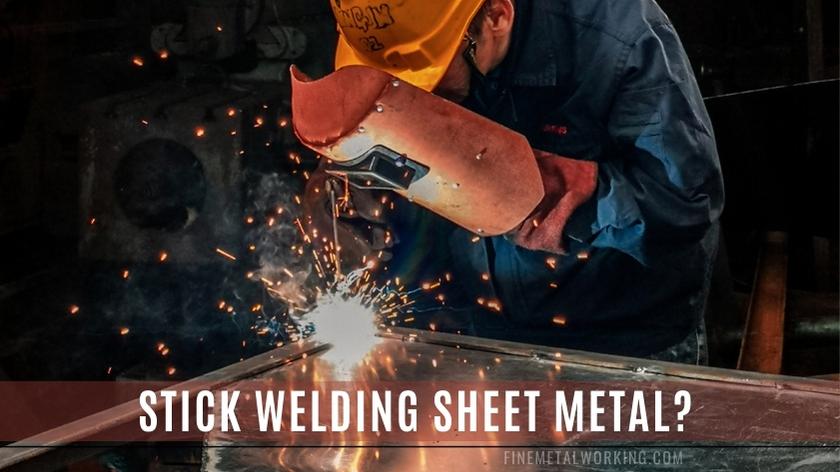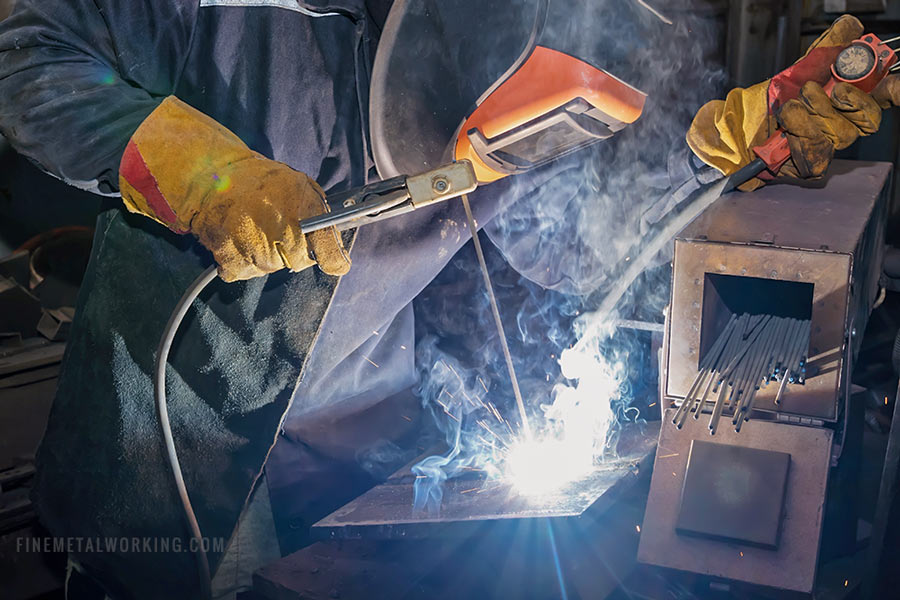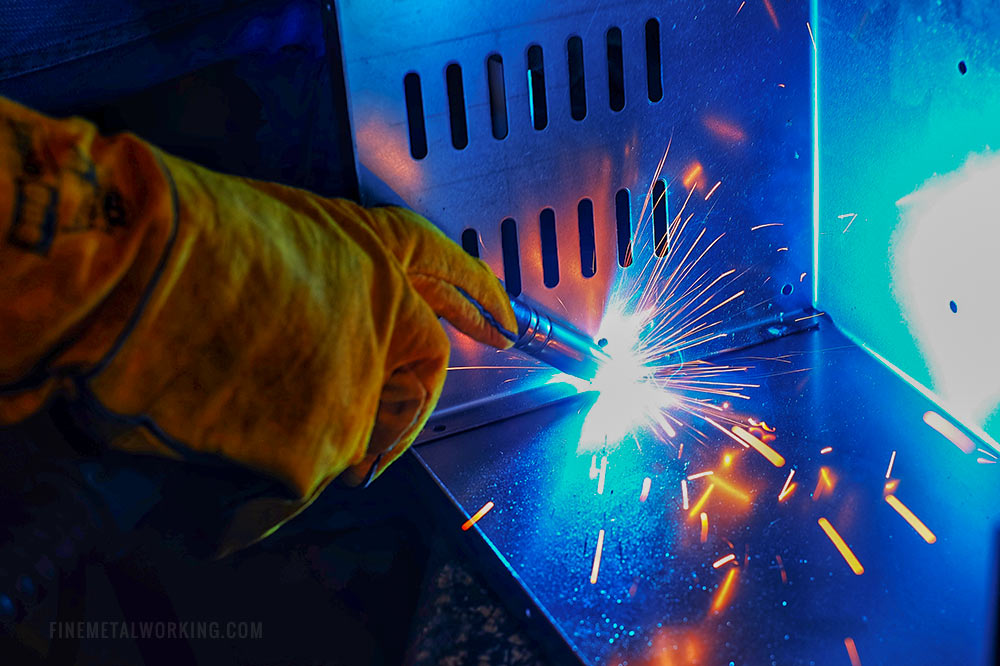Welding sheet metals is considered a highly skillful process that requires years of repetitional practice to master. Most commonly used for welding sheet metals (in order) are the welding processes of TIG, MIG, and lastly, Stick Welding. Noticeably stick welding is at the end of this list.
Why is it that stick welding or shielded metal arc welding (SMAW) is used considerably less than the other welding types? Let us explore this common question in the following article.
Page Contents
Can You Stick Weld Sheet Metal?
Yes, it is possible to weld sheet metal with a stick welding machine, but it is the most challenging option due to the aggressive nature of the stick welding process. We would only recommend using a stick welder on sheet metal if you have a very tight budget (and you don’t have access to a TIG or MIG welder) or you are working outdoors (stick is the dominant welding type in this field).
Stick Welding Thin Metal
So, assuming you have decided that a stick welder is the best option for your project, here are some important tips to consider such as to successfully weld sheet metals:
Setting up
The setup preparations for stick welding sheet metals are even more important than those found in standard welding procedures if you want success. Make sure the stick welder is being used on the DC current to allow for smooth operations and welding laying. When it comes to amperage, start colder and preferably on a test piece and adjust your amperage with experimentation. Thicker sheet metal will require a little more heat than thinner ones.
Electrode Selection
We recommend using an E6011 or an E6013 electrode for welding sheet metal. This is because these electrodes contain a high concentration of cellulose which makes them much easier to use with a smooth arc.
Welding Process
As per normal with stick welding, you want to drag the weld (so that your hand is in front of the weld pool). It is important to be observative of the weld pool to make sure you are not overheating the sheet metal which would result in excessive penetration and potential warping of the steel. Weld travel speed can be key in maintaining a good amount of heat input.
How Thin Can You Arc Weld?
When welding sheet metals, the thickness (or the gauge) of the sheet metal is not a big problem when concerning thicker sheets. However, welding is much less flexible when working upon thinner materials. Our recommendations for the minimum and maximum sheet metal thickness would start at no less than 16 gauge or 1.5mm and max out at 6mm (15/64 ″). Anything more than 6mm is considered a metal plate and not sheet metal.
We recommend a minimum of 1/16 inch (1.5mm) because anything lower than 16 gauge going to prove to be more trouble than it is worth to weld. 22-gauge (0.7mm) sheets, for example, are commonly used in the sheet metal industry for all types of fabrication works.
Can You Weld 22-Gauge Sheet Metal?
You can weld a 22-gauge (0.03-inches) metal sheet using a TIG welder or even with a MIG welding unit. However, it is not recommended to stick weld 22-gauge sheet metal as excessive penetration is highly likely to occur and become problematic. The 16 gauge or 1.5mm is a safe bottom limit for material thickness when sheet metal stick welding.
If it is your first time welding sheet with a stick welder then 2mm+ sheet metal would be even better to start out on. Stick welding thicker sheet metals is much easier due to limited penetration, better control of heat (the weld pool is not going to warp or blow through the metal), and will produce more aesthetically pleasing welds.
If you absolutely need to weld a thin sheet of metal with a stick welder then we would recommend using the lowest possible amperage in combination with a fast weld travel speed. Avoiding excessive heat input is key here, so try to practice first on a test piece before starting seriously on your project.
What Type of Welder Is Best for Thin Sheet Metal?
Without a doubt, this would have to be the TIG welding process. TIG welding with gas has been designed specifically for welding sheet metals and can operate much more efficiently at lower temperatures than the likes of Stick or MIG. Accuracy also proves to be a major perk of using a TIG machine as heat control is much easier to manage which, as we have stated, is highly important when welding sheet metals.
The next best option, depending on circumstances, could be a MIG welding machine or by using an automated robotic machine (such as a Laser welder). MIG welders with shielding gas are great for welding thicker sheet metals (3.5mm +) as they are highly productive with their weld speed and are good for maintaining weld penetration and weld quality.
MIG welding is not so practical to use upon thinner sheet metals, much like stick welding, as it has its limitations with heat input and weld quality.
The alternative would be to use an Automated welder which would prove to be an excellent option for sheet metal welding works. Often automated welding machines use a TIG or Laser Welding setup and with the elimination of human error, precision and quality are exceptional.
Limitations do exist with automated welding on sheet metals and are found when a weld joint is complicated (eg: with curvature or is inside a component). Automated machines struggle to weld everything and more often than not, it is simply more efficient to weld by hand than by machine. Also important to note: automated welding machines are expensive to buy or hire meaning availability is limited for day-to-day projects or for those on a budget.



